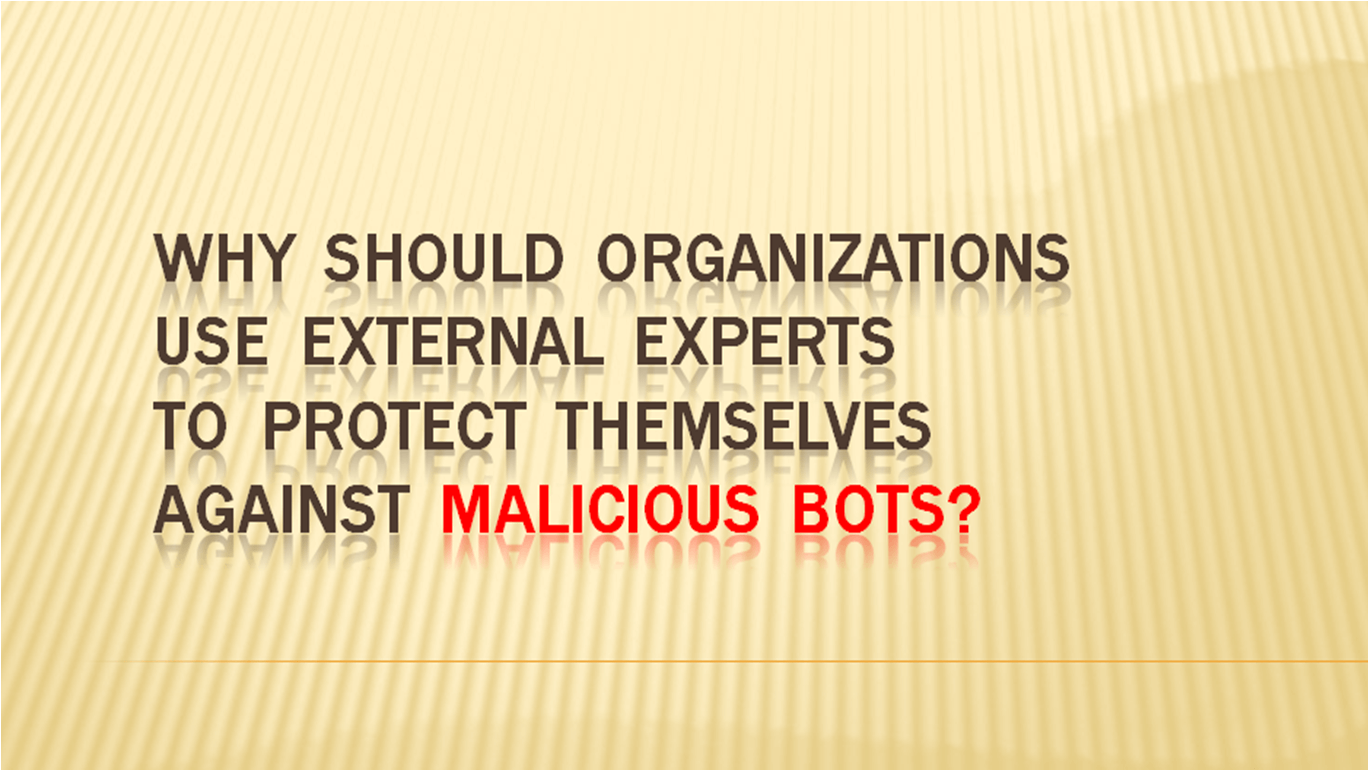Why should organizations use external experts to protect themselves against malicious BOTs?

source: own elaboration
Illegal hijacking of data or access to user accounts, borrowing content and duplicating them on other websites without the author's knowledge, and finally DoS attacks to take control of a given site - these are just some examples of bad BOTs activity. Therefore, companies are struggling with this problem, also in Poland. How to protect your business against this threat? In the following text we will consider whether the company should introduce internal solutions to the problem of bad BOTs or use the services of an external expert.
Malicious BOTs management methods.
Bad BOTs, also called malicious, are automated programs that perform certain actions assigned to them on a given website or device on which they were installed. They are characterized by the fact that their activities are a form of fraud, and the action itself takes place without the knowledge of the site administrator or equipment owner. The effects of their actions are most often: theft of data or intellectual property, taking over users’ accounts, taking away control of a given website and providing false traffic to the website in order to provide the fraudster with financial benefits. So, they can be very dangerous for any e-business, and their activity on the internet is growing year by year at an alarming rate. Like their technological advancement.
As most company directors admit, their first response to bad BOTs was to introduce an internal defense mechanism. We can distinguish four types of internal solutions for managing malicious BOTs that the organization undertakes as part of its structure:
-
manual analysis, aimed at creating a list of suspicious IP addresses, and then blocked by access control,
-
limiting the number of visits from the same IP address,
-
basic solutions based on fingerprinting (we wrote more about this technique in the previous text), collecting information about the IP address and other basic data to identify and block malicious BOTs,
-
advanced internal bot management solutions created using internal data and machine learning.
Unfortunately, as research shows in organizations that have implemented internal solutions to protect them against bad BOTs - these methods are not effective, and sometimes they bring more harm than good.
Disadvantages of internal BOTs management solutions
First of all, the mechanisms used by most companies do not detect all traffic from bad BOTs. As statistics show, even more advanced solutions created by organizations allowed to capture from 25% to half of all traffic generated by malicious BOTs. This is because they can't recognize the different types of these automated intruders. Most often, internal defense mechanisms are created based on enterprise data, so the system identifies only those threats that it has already encountered in the past. In addition, fraudsters using bad BOTs are perfectly organized and often know what defense systems a given site uses. So they are prepared - they use different tactics so that the company's internal solutions won't identify them.
For example, a significant part of organizations that use their own resources to protect themselves from BOTs exploit the geographical exclusion of certain areas, especially countries where they don't operate or which they consider as dangerous. While modern BOT developers easily change the IP addresses and geographical location of their equipment. Therefore, internal solutions based on geographical filtering are becoming completely useless.
Secondly, the methods adopted in most companies assigned some real users BOT status. Even half of all activities assigned by the program to bad BOTs, in fact, had nothing to do with them. Such situations happen because these programs focus mainly on eliminating all potential threats, and not on techniques to recognize bad BOTs. Too broadly defined criteria mean that real website users identified as BOTs are blocked and the company loses potential customers.
In addition, these types of solutions may have a problem with understanding the characteristic behavior of users, and this negatively affects the overall impression of site visitors.
Internal systems also won't be effective in the case of advanced DoS attacks. According to Sam Crowther, CEO of a global cybersecurity company, Kasada, "When it comes to DDoS, unfortunately, L7 DDoS attacks can only be stopped by analyzing the connecting client. This means that legacy CDN solutions that perform analysis on the HTTP request are ineffective at preventing these attacks."
Proper management of BOTs requires constant research and comprehensive knowledge of the subject to be able to keep up with cybercriminals, who constantly improves their techniques. In addition to extensive knowledge, technological facilities and significant funds allocated for research, the company would also have to employ experts and delegate them solely for this purpose in order to be able to face the bad BOTs on their own. So, when you consider the costs, it doesn't make any economic sense. Using specialist services - an external company devoted to this subject will be much more effective. Fortunately, you don't have to look far - TrafficWatchdog is one of them.

